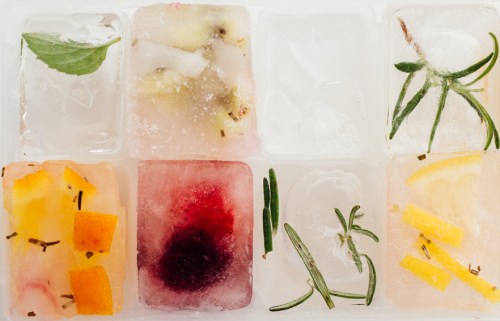Ice Cubes (and Their Trays) Can Be a Breeding Ground for Bacteria—Here’s the Easiest Way To Avoid It, From a Food Safety Expert
A food safety expert shares why your ice cube tray can be a breeding ground for bacteria and how to clean an ice cube tray.

If you’re like me and prefer your drinks à la Andre 3000 (that is, cooler than being cool: ice cold), I have an important question to ask: When’s the last time you thoroughly cleaned out your ice cube trays?
Experts in This Article
a food safety expert and corporate director of technical training and consulting at Microbac Laboratories
Again, if you’re like me, you might think that a quick rinse before refilling and freezing will suffice. But according to Trevor Craig, a food safety expert and the corporate director of technical training and consulting at Microbac Laboratories, neglecting a standard scrub in between uses can be risky.
Why it’s crucial to wash your ice cube tray after each use
You’re (hopefully) already used to washing your dishes, cups, utensils, and the like immediately after using them. According to Craig, we should apply the same hygienic standards to our ice cube trays. “In general, they should be cleaned like you would any other kitchen item: with hot soapy water, then rinsed well,” he explains.
While Craig notes that the risk for contamination is relatively low, the risk is still present. “It’s a good idea to wash them because you just don’t know what could have happened or if they have been contaminated,” he continues. “Why risk it if it’s pretty easy to clean them before refilling them?”
Ice cube trays may not be inherently more likely to breed bacteria than other kitchen tools. However, since many of us (I’m sure it’s not just me… right?) probably don’t wash them regularly, the risk can escalate since they’re simply not so fresh and so clean. (Off topic: I hope at least a few readers will appreciate the conveniently appropriate Outkast references thus far.) After all, Craig reminds us that freezing isn’t really a kill step. “It may kill some bacteria by lysis due to expanding water, but many bacteria survive cold storage and can continue to grow, although slowly,” he shares.
Craig mentions this is a key reason why frozen foods like ice cream are often associated with salmonella, listeria, and mono recalls. “The freezing process doesn’t kill the bacteria,” he reiterates. “As soon as it gets back into conditions that support growth, that bacteria can come back and cause illness.” Bacteria aside, research shows that ice cubes also have the potential to harbor opportunistic pathogens—including yeast and mold—that remain viable as you sip on your chilled bev of choice.
“[Freezing perishable items] may kill some bacteria by lysis due to expanding water, but many bacteria survive cold storage and can continue to grow, although slowly.”
Moreover, filling your ice cube trays with something beyond H2O—like coffee to prevent watery cold brew, or fruit and herbs mixed into water to make fancy ice—heightens the chances of breeding bacteria. “Adding anything to water is likely to increase the risk of bacteria being introduced, and nutrients into that mix to support the growth of bacteria,” Craig cautions. Again the risk is low but still there. “Keep that in mind with anything you add or make a liquid out of,” he continues. “It will have all the bacteria risks as before but probably just slowed.” This includes the likes of frozen broths and soups, especially if they were refrigerated or left to sit at room temperature for a few days, instead of freezing them immediately.
3 safety tips for ice cube storage
To ensure that your ice cubes are as safe as possible for consumption, heed Craig’s parting tips.
1. Wash them (and your hands) before refilling
Remember: Give ice cube trays a good scrub with hot soapy water, rinse them well, and let them dry completely putting them back to use. While you’re at it, fill your trays only after washing your hands to avoid potential contamination from the inevitable shaky transfer to the freezer.
2. Store your ice cube trays on the top shelf of your freezer
In case you store your trays wherever you can find room in your freezer, Craig advises making a dedicated space for them higher up. “A good rule that I use in my freezer is to put my ice cube trays near the top so they are less likely to be contaminated by anything that could drip,” he shares. “There’s a lot of food that you buy from the grocery store that is naturally going to be contaminated with dangerous bacteria that might go into your freezer. Meat is a good example and potentially could drip into other foods or trays and contaminate them.” Hard pass, TYVM.
On this point, it’s also a good idea to leave enough buffer room between your ice cube trays and any other items to limit contact and thus potential contamination.
3. Clean out your ice storage container
If your freezer has a built-in ice maker, the same standards for cleaning apply. “As for the [containers] that are auto-filled and dumped by the fridge themselves, they should be in a different section of your fridge and are less likely to be exposed,” Craig notes. At any rate, “They usually can be removed and cleaned.”
Sign Up for Our Daily Newsletter
Get all the latest in wellness, trends, food, fitness, beauty, and more delivered right to your inbox.
Got it, you've been added to our email list.










